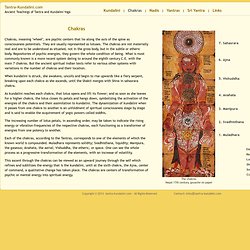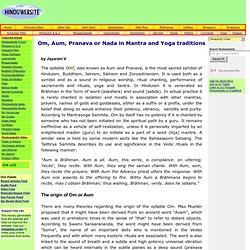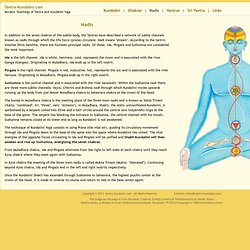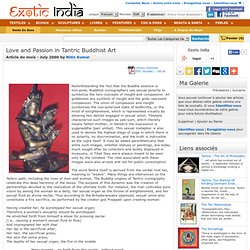

Secret Fire: The Relationship Between Kundalini, Kabbalah, and Alchemy. 11 March 1997 Foreword The following exercises are designed to assist in freeing the most potent energy known to humanity and resident in creation.

They are not designed for someone with little or no esoteric experience. In general, it would be advisable to have at lest one to two years of practical, daily experience with the Middle Pillar and/or Pentagram Rituals; in addition, an equal amount of time with the Hexagram Rituals. Several workings of the 32nd through 24th Paths on the Tree of Life would also be desirable[1], and regular practice of once a week or so of “Rising on the Planes”[2]. The amount of time it will take to experience the Secret Fire is unknown, although preparation is the best guarantee of success. While this may seem like a lot of work, it is not. Ora et labora, Mark Stavish Wilkes-Barre, Pennsylvania April 1997 Introduction Theoretical Background Creation — “In the Beginning …” Each World is a reflection to a denser or more subtle degree than the one before or after it.
Kundalini And Qiqong Psychosis. The seeker who dares to awaken the kundalini power without the grace and guidance of a guru might become insane, succumb to diseases, or even die.

This is because he does not possess the necessary knowledge, steadiness of mind, or patience required for this difficult undertaking. Swami Kripalvananda Introduction I have been teaching Buddhist meditation for about 23 years. Being a doctor who is interested in psychiatry, I have always wondered whether prolonged and excessive meditation could produce mental imbalance. However, about 20 years ago a monk came to me complaining to me about a student in a meditation retreat he just organized. About ten years ago, a middle-aged man stood up at question time and proudly announced that he has just completed a ten-day retreat with a group of monks.
About eight years ago a man of 39 years old approached me for healing. Another middle-aged woman came to me with a stuck kundalini at the chest. Kundalini Shiva and Shakti. The Practice of Tantra and Tantric Ritual in Hinduism and Buddhism. History of tantra It is difficult to trace the history of tantra which is mostly obscure as in case of the history of religions.

Many tantras offer mythical explanations for their origins, often setting themselves as the given word of either Siva or a goddess such as Devi. Scholarly depictions of their origins are often as varied, ascribing tantras to pre-Aryan, Indus Valley civilizations or similar aboriginal, tribal groups or as integral part of an Indian cultural fabric. Chakras. Chakras, meaning "wheel", are psychic centers that lie along the axis of the spine as consciousness potentials.

They are usually represented as lotuses. The chakras are not materially real and are to be understood as situated, not in the gross body, but in the subtle or etheric body. Repositories of psychic energies, they govern the whole condition of being. What is most commonly known is a more recent system dating to around the eighth century C.E. with the main 7 chakras.
But the ancient spiritual Indian texts refer to various other systems with variations in the number of chakras and their location. When kundalini is struck, she awakens, uncoils and begin to rise upwards like a fiery serpent, breaking upon each chakra as she ascends, until the Shakti merges with Shiva in sahasrara chakra. Mantra, Tantra and Yantra in Hinduism. By Jayaram V.

Aum, Om, Pranava and Nada, Meaning and Symbolic Significance. By Jayaram V The syllable Om1, also known as Aum and Pranava, is the most sacred symbol of Hinduism, Buddhism, Jainism, Sikhism and Zoroastrianism.

It is used both as a symbol and as a sound in religious worship, ritual chanting, performance of sacraments and rituals, yoga and tantra. In Hinduism it is venerated as Brāhman in the form of word (askshara) and sound (sabda). In actual practice it is rarely chanted in isolation and mostly in association with other mantras, prayers, names of gods and goddesses, either as a suffix or a prefix, under the belief that doing so would enhance their potency, vibrancy, sanctity and purity. According to Mantrayoga Samhita, Om by itself has no potency if it is chanted by someone who has not been initiated on the spiritual path by a guru. "Aum is Brāhman. Sushumna, Ida and Pingala: Nadis of the subtle body. In addition to the seven chakras of the subtle body, the Tantras have described a network of subtle channels known as nadis through which the life force (prana) circulate.

Nadi means "stream". According to the tantric treatise Shiva Samhita, there are fourteen principal nadis. Tantra Sculptures. Tantra: The Method Of Kindling Dormant Energies. Experience It Now - Self Realization (Kundalini Awakening) through Sahaja Yoga. Now, after the end of the meditation, see if you are feeling relaxed and if your thoughts have slowed down or gradually disappeared.

This is the first stage of meditation - thoughtless awareness - where you are fully alert but without any thoughts, in a state of pure and peaceful consciousness. Now see if you can feel a sensation of a gentle cool breeze in your palms and above your head. It might be warm in the beginning which is a sign that your Kundalini energy is purifying your chakras, but it will eventually cool down. You can verify it by placing your left palm 6-12 inches above your head, then trying with the right palm. If you are unable to feel it, you have probably not forgiven everyone. This is the beginning of a fantastic journey into your own spiritual existence. Tantra: Sex or Enlightenment? Is this Tantra?! What is Tantra all about? Sacred sex, or enlightenment? Love and Passion in Tantric Buddhist Art.
Notwithstanding the fact that the Buddha essence is non-polar, Buddhist iconographers use sexual polarity to symbolize the twin concepts of insight and compassion.

All goddesses are symbols of insight and the gods represent compassion. The union of compassion and insight symbolizes the non-polarized state of bodhicitta, or the mind of enlightenment, which is represented visually by showing two deities engaged in sexual union. Tibetans characterize such images as yab-yum, which literally means father-mother; in Sanskrit the expression is yuganaddha (pair united). This sexual metaphor is also used to denote the highest stage of yoga in which there is no polarity, no discrimination, and the truth is indivisible as the vajra itself. It may be added parenthetically that while such images, whether statues or paintings, are today much sought after by collectors and boldly displayed in museums, in Tibet they were always meant to be seen only by the initiated. . . . . . . . . . . Tantra - The Art of Philosophy. Tantra has developed a system of thought which makes us see the universe as if it were within ourselves, and ourselves as if we were within the universe.

Further the forces governing the cosmos on the macro-level are believed to govern the individual in the micro-level. According to tantra, the individual being and universal being are one. Thus all that exists in the universe must also exist in the individual body. One of our major limitations in discovering this essential unity between the microcosm and the macrocosm is that we are accustomed to analyze the world into its separate parts, with the result that we lose sight of those parts' inter-relationship and their underlying unity.
The way to fulfillment is through recognition of our wholeness linking man and the universe. Encompassing its whole pictorial range, Tantric imagery can be broadly grouped under three heads: Yantra. Tantra kundalini.